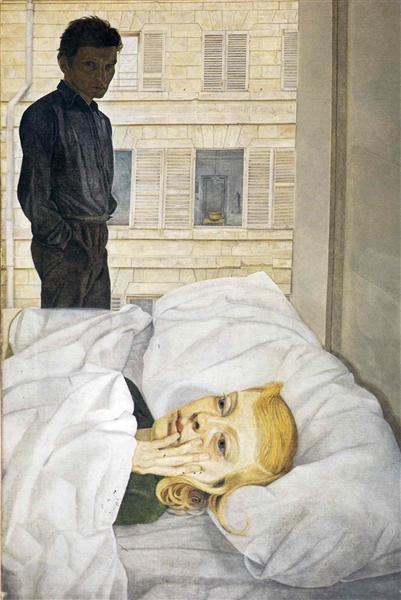10 Iconic Floral Still Lifes You Need to Know
Flowers have long been a central theme in still-life painting. Each flower carries its own symbolism. For example, they can represent innocence,...
Errika Gerakiti 6 February 2025
Moving houses is an enterprise, isn’t it? Packing, getting rid of useless but loved items, sending boxes with winter clothes… Maybe peering into painters’ bedrooms will help us move forward, leave our own little rooms, and even get inspired with interior design!

Pieter de Hooch was a master of peering into the private spaces of his contemporaries as most of his paintings are glimpses of domestic life. How to recognize a de Hooch interior? He usually painted a room with an open window or door. This deepened the perspective of the painting and added a symbolic message of hospitality and pure life. Such views through an open door/window even have a specific art-historical term doorkijkje from Dutch “glimpse.”






This is probably the most famous painting from painters’ bedrooms. Van Gogh painted it because he wanted to capture the sense of tranquility he felt while being there. His choice of the color palette was not arbitrary, as he described in a letter to his brother Theo:
(…) the pale, lilac walls, the uneven, faded red of the floor, the chrome-yellow chairs and bed, the pillows and sheet in very pale lime green, the blood-red blanket, the orange-colored washstand, the blue wash basin, and the green window (…) I wanted to express absolute repose with these different colors.
– Vincent van Gogh, in a letter to his brother Theo. The Letters of Vincent van Gogh.






In 1899, Félix Vallotton married widowed Gabrielle Rodrigues-Hénriques, daughter of Alexandre Bernheim, who was a successful art dealer and founder of the Galerie Bernheim-Jeune. Not only did it mean that he had to leave the Latin Quarter to set up his new home in a spacious apartment on the Right Bank of the Seine near the Gare Saint-Lazare, but he also adopted Gabrielle’s children from her previous marriage. However, Vallotton had nothing to complain about. This marriage brought him financial security, he could dedicate himself to painting and forget about petty jobs he did to earn his living. Moreover, the link established with the Bernheim family let him prepare a special exhibition devoted to the Nabis, which included his works.






Ainmillerstrasse was a street in Munich which at the beginning of the 20th century became a stronghold for the artistic bohéme and a spot for many painters’ bedrooms. Among Rilke, Schönberg, Franz Marc there were also Wassily Kandinsky and Gabriele Münter who moved in together in 1908 (as an unmarried couple, they later married in 1911 after 8 years of engagement). The two had met in 1902 in the art school “Phalanx”, where Kandinsky worked as a teacher.






Gwen John lived in this attic room of 87 rue du Cherche-Midi between 1907 and 1909. She loved it there, as she confessed in her letters:
I must tell you… what a feeling of contentment my room gives me. I take my meals at the table in the window… In the evening my room gives me a quite extraordinary feeling of pleasure.
Gwen John, quoted on ArtUK website.
In this painting, which is one of a series of interiors that John painted during her career, we can sense this feeling of blissful calm that permeates John’s work and shows the influence of 17th-century Dutch interiors.






Here Lucian Freud painted himself with Lady Caroline Hamilton Temple Blackwood, the Guinness ale heiress, lying in bed. They both seem distressed and uneasy. The painting was made shortly after the two had eloped after Freud’s divorce from his first wife. However, Lucian and Caroline didn’t last long together, she left him and Freud never remarried, although he had many relationships.
DailyArt Magazine needs your support. Every contribution, however big or small, is very valuable for our future. Thanks to it, we will be able to sustain and grow the Magazine. Thank you for your help!